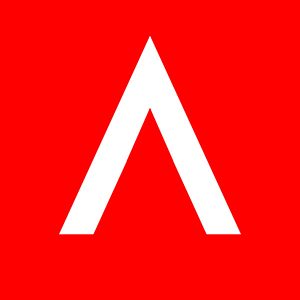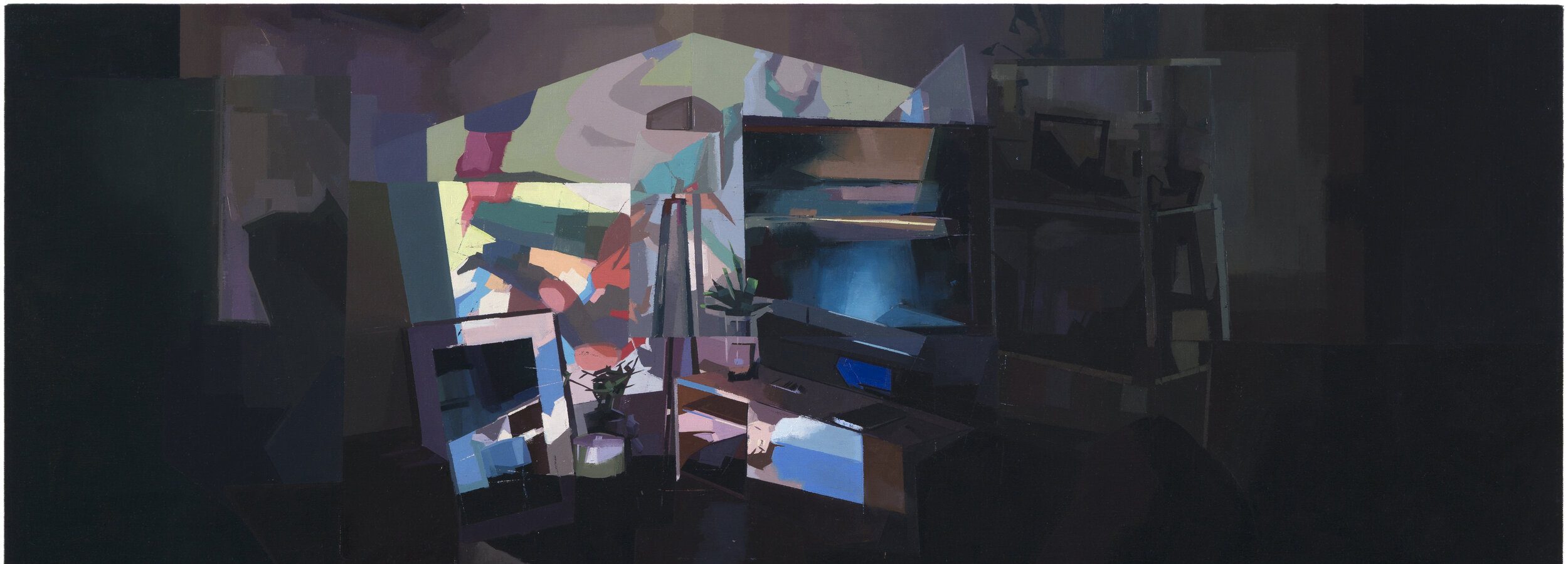Untitled (Interior with Projection), 2020 | Oil on Canvas | Adam Jester
On View November 5 – December 27
Artists’ Reception | Friday, December 17 | 6:00p.m. – 8:00 p.m.
Coffee Break: Artist Talks | Saturday, December 11 | 10:00 a.m. – 12:00p.m.
Featured Artists: Morgan Craig, Adam Jester, Nancy Halbert and John Ralston V
ARTISTS
Morgan Craig, Painting
Kellner Gallery
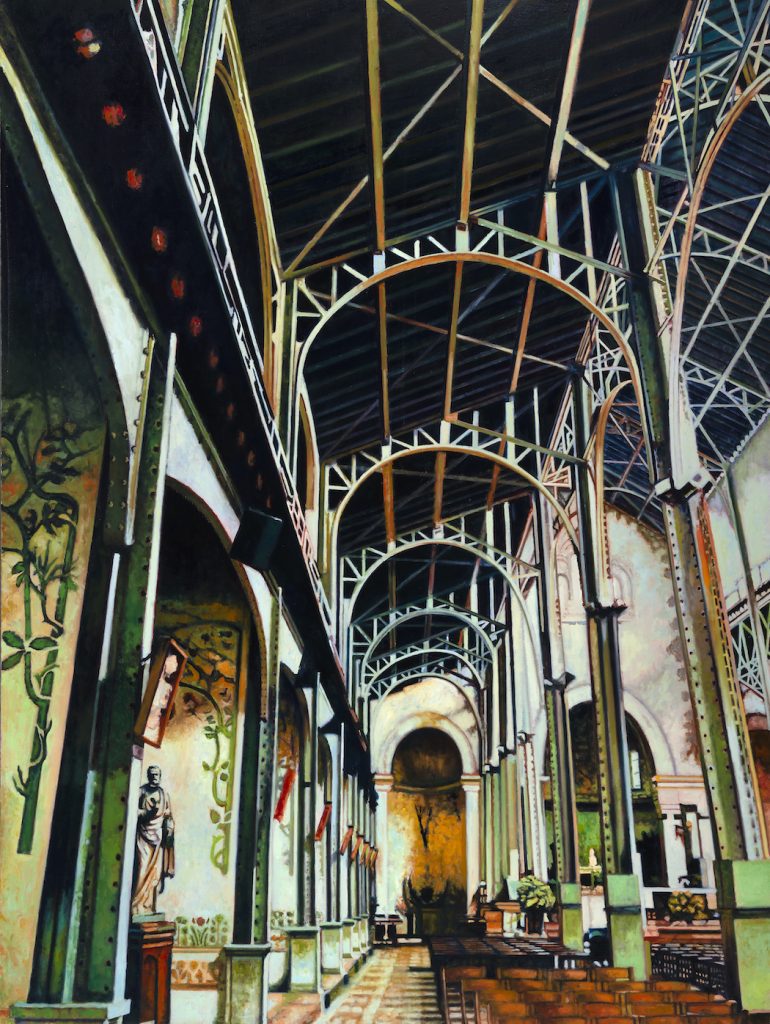


Craig believes that architectural structures acting as both repositories and as vehicles for memory profoundly influence culture and identity by providing a tangible framework through which facets of a society can be expressed. Consequently, he has been inspired to build a body of work dealing with how identity is influenced by the types of architectural edifices present in a given landscape. His work is not merely a method of documentation, but a sociopolitical/socioeconomic commentary on the effects of hubris, avarice, free trade, outsourcing, deregulation, deterritorialization, neoliberalism, obsolescence, and international-finance-capital upon communities throughout the world. Within the realm of Jacques Derrida’s theory of Hauntology, the paintings speak of the slow disintegration of the future, and the abysmal fragmentation of the past.
Adam Jester, Painting
Book Room Gallery


Jester paints what is around him. The daily intake of virtual experiences, his personal attachment to mass produced media and objects; living rooms set alight by projections of television and film; figures lit by the blinding digital light of computer screens. Careful studies of shoes, figurines, or coffee cups hint at moments of prolonged solitary observation.
The work portrays a life mediated through screens and consumption of manufactured goods.
Nancy Halbert, Painting
Tile Room Gallery
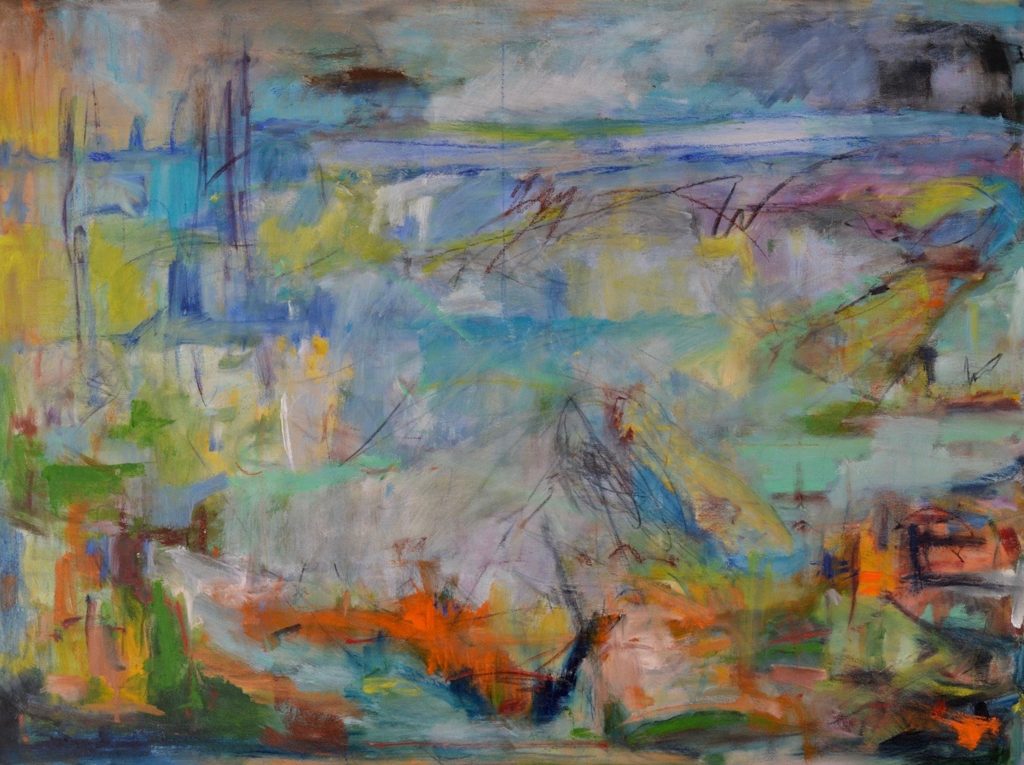
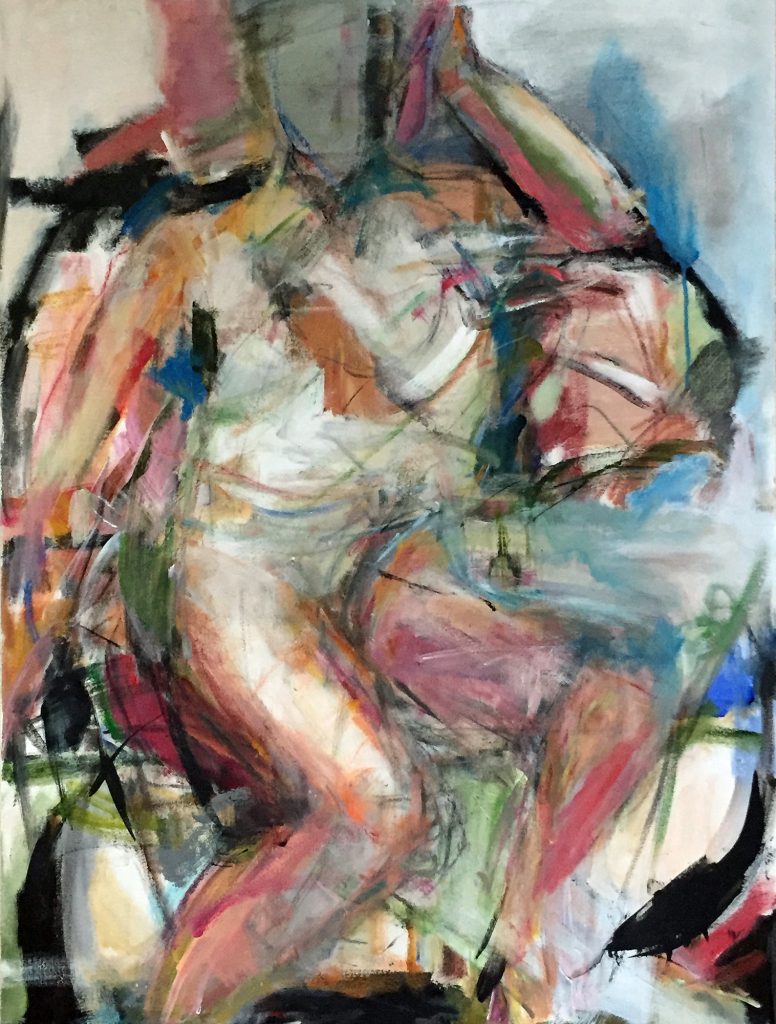

Halbert learned to draw and paint after a successful career as a choreographer, modern dancer and arts administrator. It is the balance between energy and stillness that she focuses on in her art. She reflects this discord in a gestural, painterly, and contemporary style. She develops paintings of motion to evoke emotion. She enjoys working in dry and wet media and experiments with mixing materials, fabrics and color to create painted collages of varying surfaces as she draws into paint. She paints as she would when choreographing a dance, one element moving into the next. A line begins, takes shape into mass, which will deepen with color, and then culminates into an expressionistic, impressionistic, visual experience.
John Ralston V, Sculpture
Community Arts Gallery
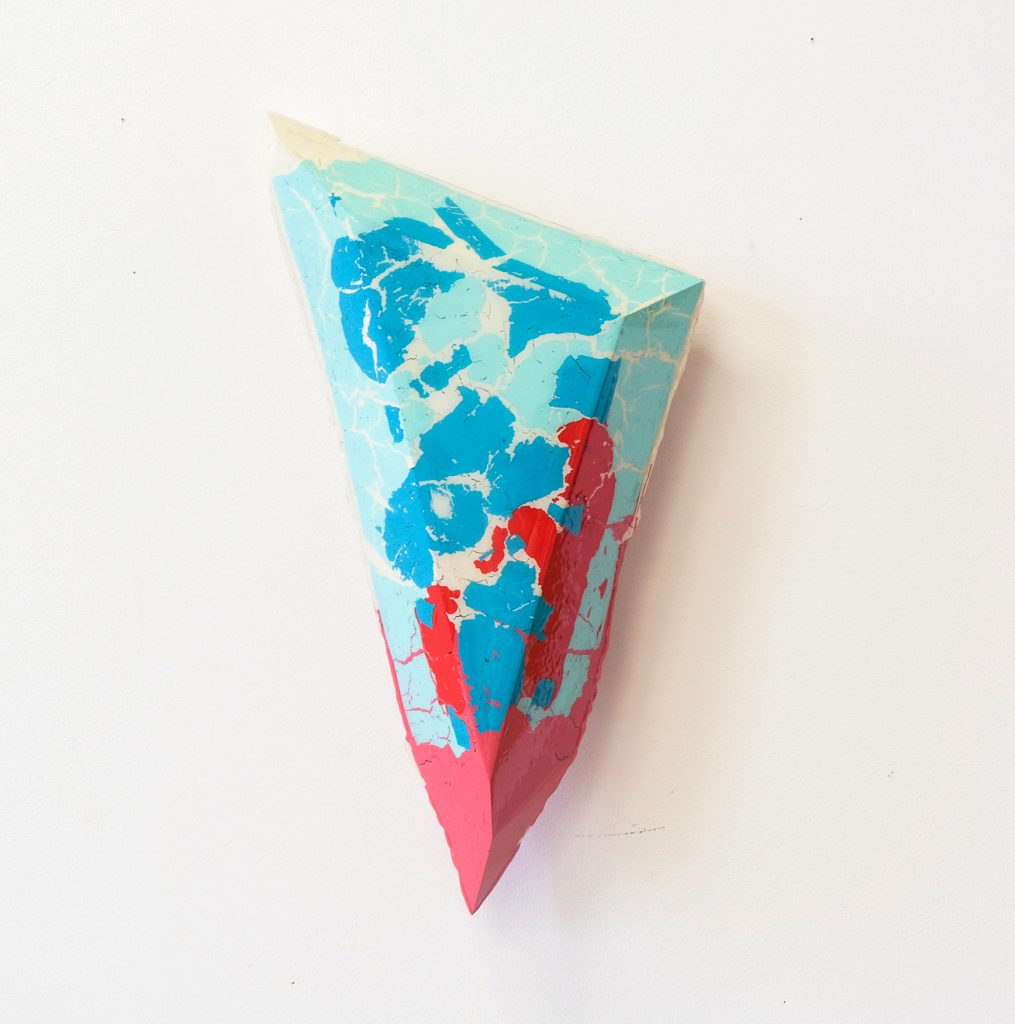
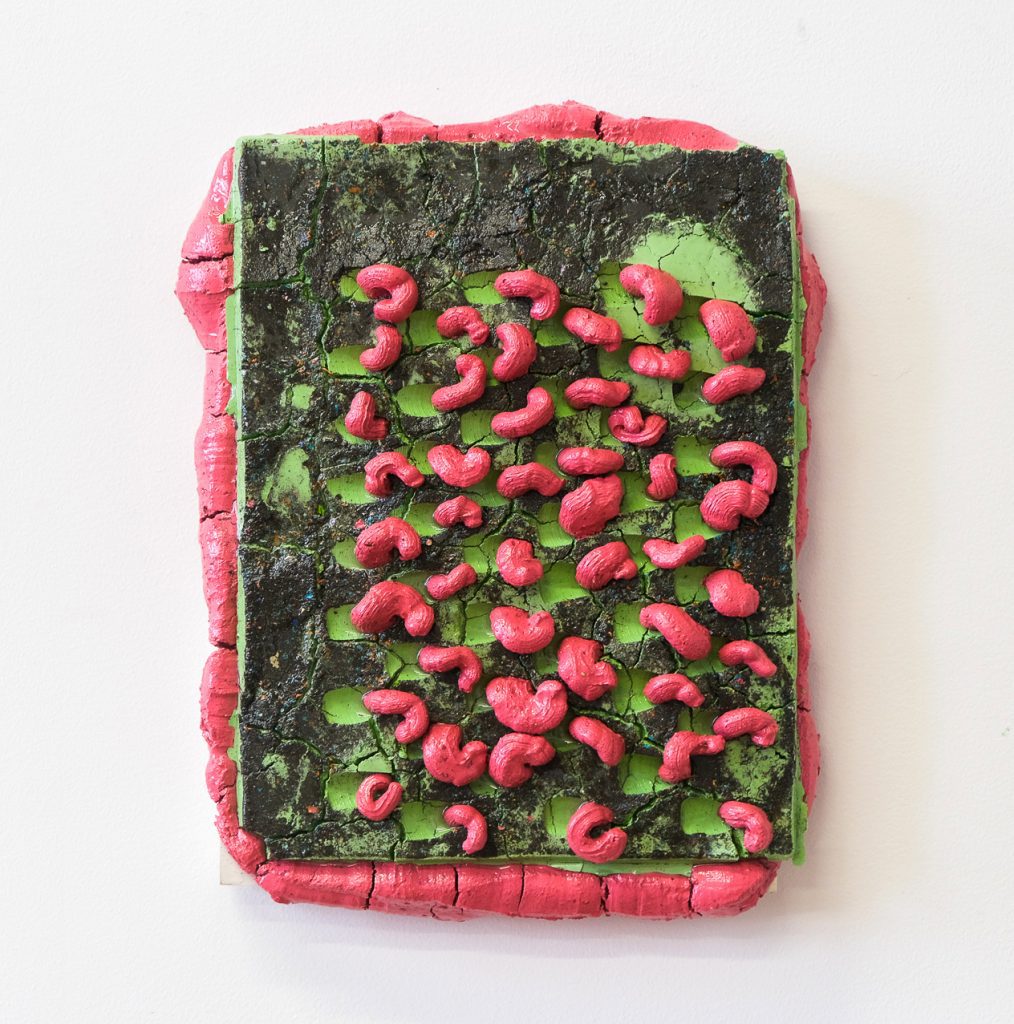
Ralston’s work conjures up mass in a real and implied way. The works are all very heavy and the arrangements within are all tightly stacked and economic in composition and their texture produces an overwhelming craving to be touched. When the density and surface are combined they draw the viewer into a desire to handle the works in a way not typical to the inspection of art. They want to be held up, or viewed flat on a table, or flipped upside down to stare into the punctures and splits that mar their surface. The most consistent element is the craquelure that marks the evacuation of water from deep within their structure. This transformation takes place in all of them and marks an end to malleability and an evolution into a raw product waiting to be shifted t o another form.
